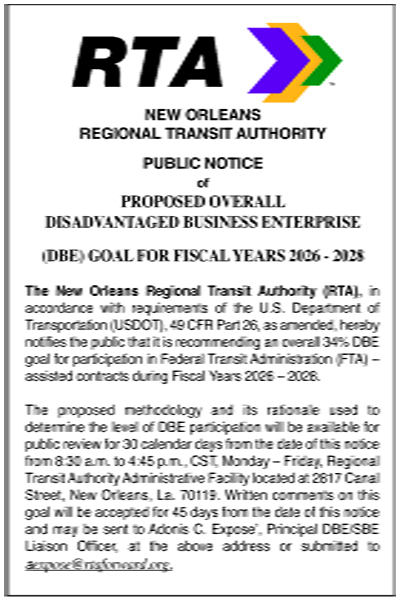Build a surge barrier
13th September 2021 · 0 Comments
By Christopher Tidmore
Contributing Columnist
Metro New Orleans got lucky with Hurricane Ida.
That’s a heck of a claim to make when many readers of The Louisiana Weekly went as much as two weeks without power, and countless schoolchildren remain outside the classrooms still.
Nevertheless, there is a serendipity to how we escaped the floodwaters this time, and a warning for future storms — if we fail to build real floodwall defenses at the opening of Lake Pontchartrain into Lake Borgne and the Gulf of Mexico.
However successfully our $14.5 billion dollar levees held against the recent storm’s wave action, if Hurricane Ida had approached the Pelican State on a vector from Mississippi Gulf Coast towards the Chef Pass and the Rigoles, as happened during Katrina, areas of the Northshore might have endured similar flooding to what the Southshore endured on August 29, 2005.
In part, that’s because the Southshore levees and flood protection system was reconstructed so well in the last 16 years, while the flood barriers on Northshore remain little changed in the interim. The water that one’s flooded New Orleans could easily back up and flood Mandeville. In other words, we never instructed a barrier geared to blocking Gulf seawater from flooding into Lake Pontchartrain, as many experts suggested a decade and a half ago. We never built a damn at the Chef Pass and the Rigoles comparable, for example, to what we constructed at the Inner Harbor Navigation Canal Lake Borgne Surge Barrier.
Finished in 2013, $1.1 billion surge barrier was designed to stop a rush of water from a hurricane or storm down the former Mississippi Gulf River Outlet, and subsume the Lower Ninth Ward and St. Bernard Parish in flooding. The 1.8 mile IHNC Surge Barrier, built by the US Army Corps of Engineers, was constructed near the confluence of and across the Gulf Intracoastal Waterway (GIWW) and the MRGO near New Orleans. The barrier runs generally north-south from a point just east of Michoud Canal on the north bank of the GIWW and just south of the existing Bayou Bienvenue flood control structure. It proved a perfect (and relatively simple) form of defense from a wall of water subsuming homes in an hour during a hurricane.
Nevertheless, the IHNC Barrier, only protects a small portion of the metro area from surges. The rest of the Southshore might have relied upon the new levee system, which held during Hurricane Ida, yet faced those levees still faced the danger of overtopping at points. The rest of the Lake basin was almost left protectionless. Coastal communities along the northshore like Mandeville and Slidell have few defenses, historically relying on their higher ground. It is a lesson that even with Ida entering Louisiana from the west just over two weeks ago, parts of the St. Tammany Parish still experienced flooding.
If a Category-5 storm had entered Louisiana from the other direction, many of the communities along the Lake Pontchartrain basin could have been rendered underwater. They lack the massive levee protections of East Bank Jefferson, Orleans, and St. Bernard. Rather than build a wall around the lake, though, a better method—which could improve New Orleans’ own storm defenses as well— would be to build a larger surge structure across the Chef Pass, where Lake Pontchartrain meets the waters of the Gulf.
A long barrier matched with a gate similar to the Maeslantkering (which can close the main entrance to the Port of Rotterdam from rushing potential floods), would allow seaborn traffic on normal days and flood protection during storms. At a $5 billion potential price, such a surge barrier could immediately convert New Orleans’ 100-year levee protection into “1000-year” protection, as well as provide real defenses to the rest of the communities along the lake— at a fraction of the cost and environmental impact of building new levees around the Lake. However, such a massive effort requires federal help. Most especially, the possibility of such a structure’s construction could only happen in the current brief window of time.
We have a chance to build something similar to the Netherlands’ Oosterscheldekering. Using 62 steel doors, each 42 metres (138 ft) wide, it protects the opening roughly the size of the Chef Pass. As the original author of the bipartisan bill, Louisiana US Senator Bill Cassidy has a chance to harness the current federal concern for Louisiana and transform it into an addendum onto the current $1.5 trillion infrastructure bill—to mandate the erection of a true Lake Pontchartrain surge barrier.
This article originally published in the September 13, 2021 print edition of The Louisiana Weekly newspaper.



